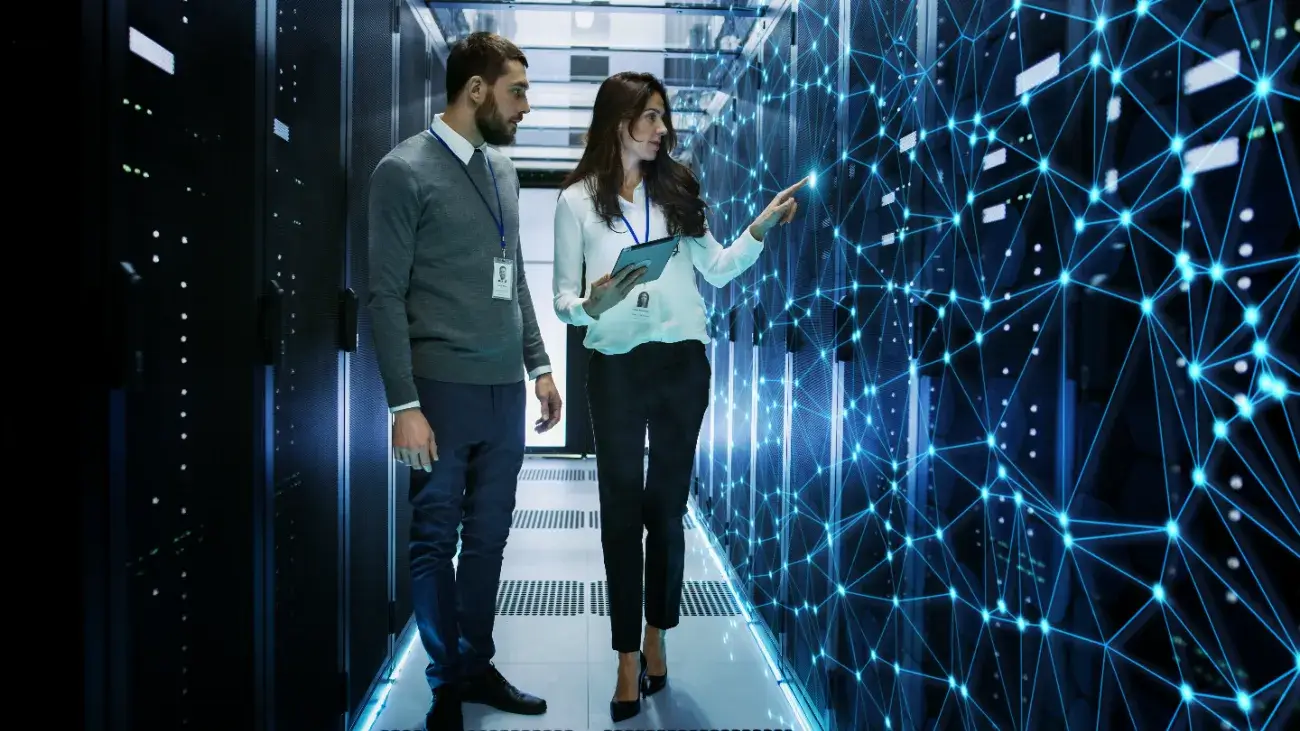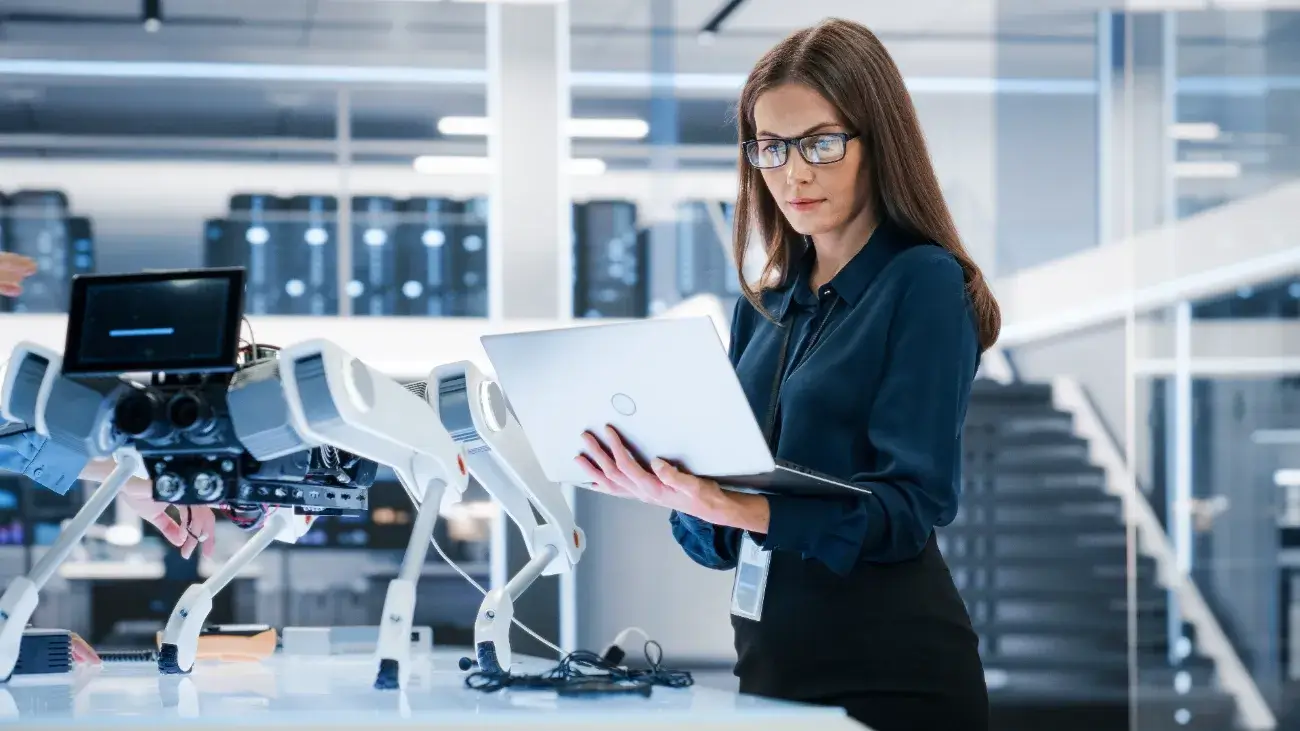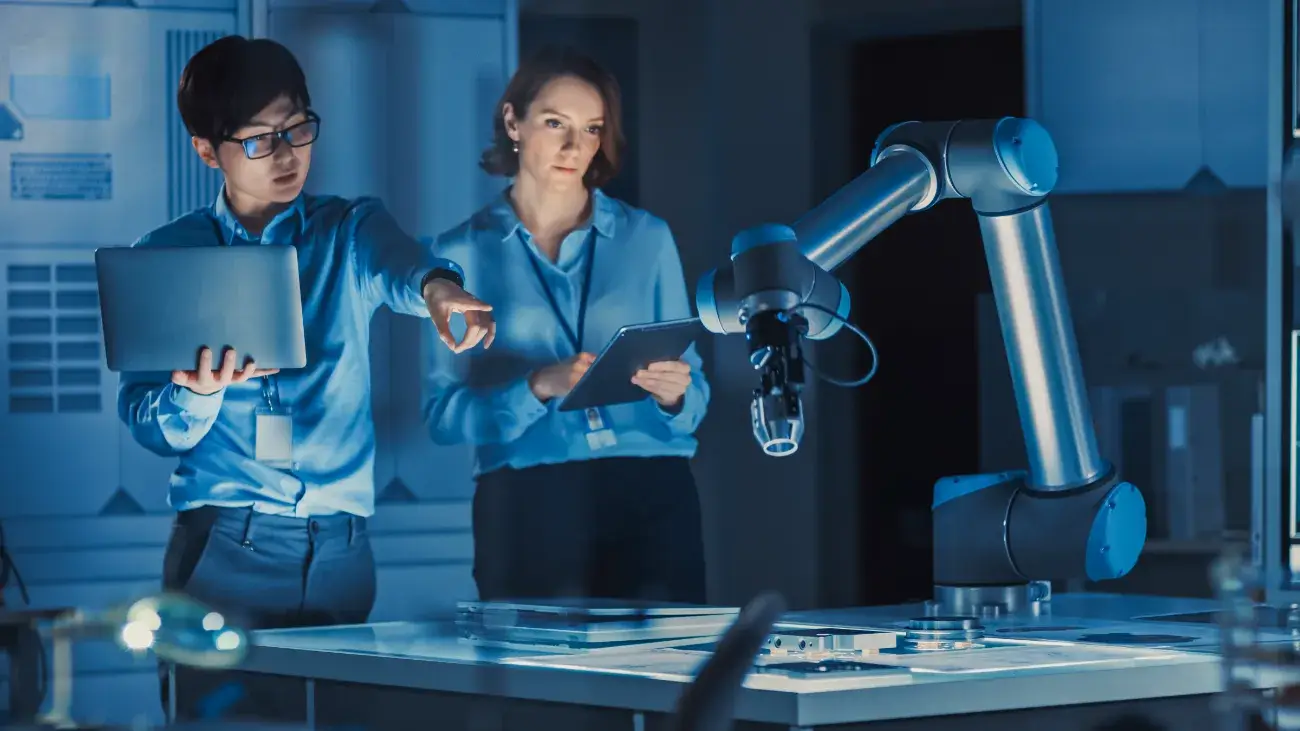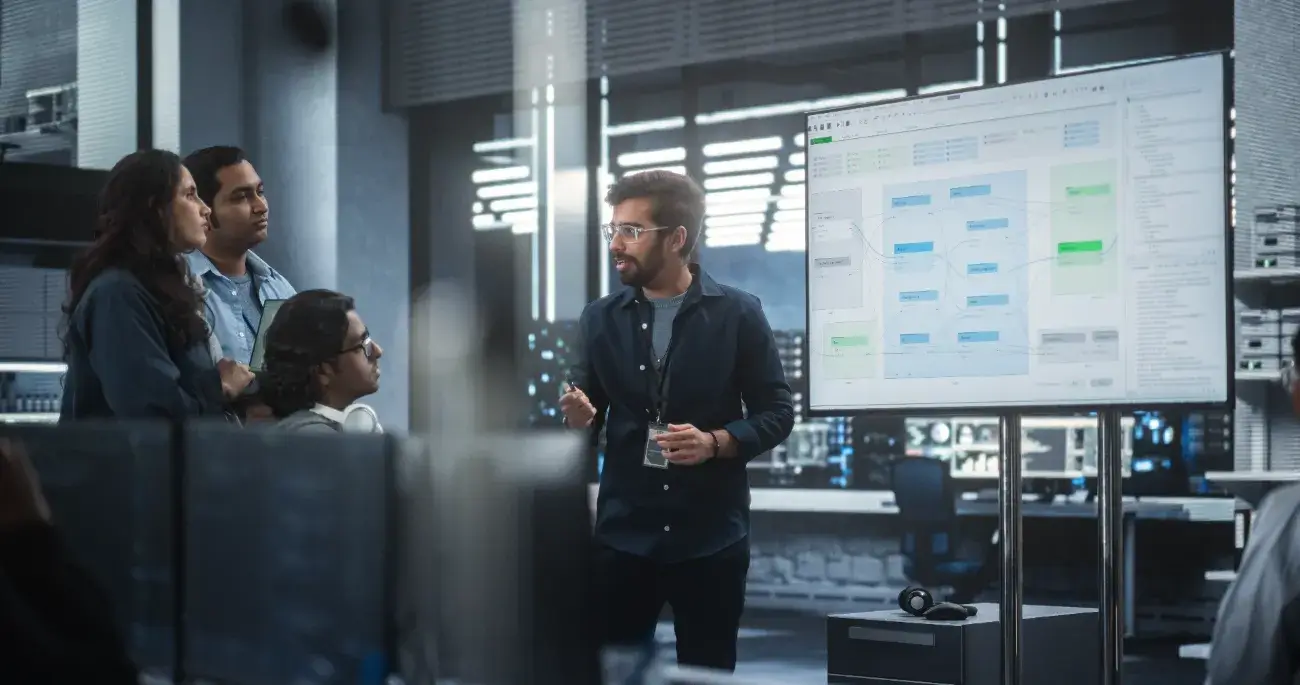
16 June 2023 - 6 min read
We are now living in the age of artificial intelligence, where blended working between machines and humans are becoming the new norm. Adopting such practices is integral for the acceleration of a business’s success in this day and age.
We have competent robots and artificial intelligence (AI) systems at our disposal which are fully capable of handling tasks that were once performed solely by humans. It has now become so much easier to leverage the capacities of such machines to our benefit.
However, this also comes with its fair share of doubts, as every new concept does, regarding what AI’s role will be in organisations and how we can find the right balance between human and artificial intelligence. One of the first questions that should be addressed in organisations utilising these tactics revolves around which jobs are most suited for humans and which for machines.

In many traditional corporate organisations, employees appear to still be reluctant in adopting AI and intelligence machines in-line with their work due to fear of job losses, demystification, change in management practices and actions to be taken towards educating staff for the new technological era. Regardless, understanding the capabilities and capacities of AI in an organisational setting could be paramount in finding the right balance between human and artificial intelligence in the workforce, in an effort to make the most out of this new technological advancement and fully leverage AI’s potential to benefit organisations.
AI can now perform some extraordinary tasks, from reading, seeing, writing, speaking, to even comprehending human emotions. The basic thing to understand about AI’s functionality is that it utilises a simple input-to-output scenario to perform any task it is given.
Essentially what this means is that AI systems generally take a form of input, whether that is visual, written, audio data etc., and then generate a particular output based on the way it was programmed to report on data. To put it simply, once organisations come to grips with this basic input-to-output process they can quite easily automate numerous tasks which follow this model such as moderating online content, answering simple customer inquiries, maintaining their bookkeeping records, automatically entering data and so much more.

A great proportion of the reluctance in adopting AI systems in organisational settings is attributed to risks about how it will affect the human workforce. With AI’s ability to handle tasks once performed by human employees, there is fear that human jobs, which involve some or of input-to-output model, run the risk of getting automated in the years to come.
According to the World Economics Forum’s ‘The Future of Jobs Report 2020’, figures suggest that by 2025 an approximate of “85 million jobs may be displaced by a shift in the division of labour between humans and machines”. In contrast to that however, that same report also estimated that around “97 million new roles may emerge that are more adapted to the new division of labour between humans, machines and algorithms”.
In order to effectively accomplish this though, it is vital for business owners to identify the best practices to help balance the introduction of AI in the workforce, while still maintaining a human touch to their business practices.
Not only that, but employers will now hold the responsibility of upskilling and training their employees to undertake tasks that these new roles will require, with different skills and capabilities, compared to the manual tasks that will now be taken over by machines. What does that mean?
Employers essentially have to prepare their workforce for the imminent 4th Industrial Revolution. Human capacities will become increasingly valuable in the workforce as a result, with things such as creativity, emotional intelligence, empathy, critical thinking and many more requiring to be addressed by human intelligence in the workforce.

A significant contribution AI could bring to businesses, as already briefly mentioned, is the automation of repetitive and mundane tasks that have traditionally been performed by employees. Taking away these time-consuming and boring tasks from employees can allow them to focus more on strategic and creative concepts of their work, putting their critical thinking, problem-solving and emotional intelligence to good use.
Smartsheet’s ‘Automation in the Workplace’ report found that 69% of information workers felt like automation could help reduce time wasted on manual, boring tasks that directly affect employee happiness and job satisfaction. In addition to that, the report stated that 72% of those workers said that the time saved could be better used to focus on meaningful work that is of “higher value”.
A great example of a company which perfectly combines AI and human touch to gather consumer insights is style service Thread. Thread distributes questionnaires to their clients, in an effort to find out their product preferences, asking them to also upload an image of themselves to provide more accurate personalised recommendations. Stylists then review the questionnaires submitted and then use the company’s AI algorithm to sort through thousands of products available online to give their clients the best styling recommendations for them. Thread’s brand, technology and data have since been acquired by Marks & Spencer to bring this cutting-edge technology to a much larger audience.

Companies’ decision-making processes can be significantly enhanced as a result of AI’s ability to provide valuable insights due to data analysis. Machine Learning algorithms have the capacity to identify patterns and trends which could sometimes be overlooked by humans.
In this sense, these algorithms can be utilised to streamline the recruiting process by screening CVs and resumes, monitoring website traffic to better understand the audience, market and overall engagement, as well as observing market trends in order to forecast shifts in the industry to avoid potential risks.
Automation of customer inquiries can significantly help cut down the duration of customer support teams’ calls through the use of chatbots. However, it can also be very frustrating for customers to get straightforward answers from a chatbot that has not been programmed to deal with that kind of complaint.
Instead of letting the customer become completely frustrated with the service, and as a result deciding not to complete the purchase, AI can help redirect the customer from the chatbot to a human that can assist with the inquiry. Then these inquiries can be dealt with through call or live cat to help solve their issue.
This will in turn keep clients satisfied, leading to a service, while also helping keep customer complaints or inquiries under control without inundating the business’s call centre with repetitive customer questions.

Concerns for job losses are at an all-time high with machine learning and AI becoming continuously more sophisticated. PWC’s Global Workforce Hopes & Fears Survey 2023 found that 30% of respondents are concerned their roles in their company would be replaced by technology in the next 3 years.
As already mentioned, the number of roles forecasted on being lost as a result of AI implementation is significant, and with AI being such a new concept or any fear are justified. The focus however now shifts to empowering and educating employees to become accustomed to the new technologies, in order to re-enforce their roles and skills to satisfy the shift. Not only that but HR departments worldwide must address employee concerns with continuous support, taking care of employee wellbeing and mental health.
Ultimately, while the 4th Industrial revolution is quickly approaching, businesses are required to take action in addressing the balance between AI and their human workforce through appropriate training and upskilling. This can help provide parity between the fears AI’s repercussions can have on certain traditional roles, while utilising its potential and capacities to accelerate business success.
Learn how to upskill your employees to effectively balance artificial and human intelligence in the workplace with Acacia’s fully-accredited CIPD Learning & Development courses.